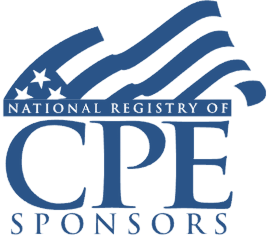Welcome! Save 30% on all CLE, CPE, and Professional Skills webinars, plus 15% off any annual pass with code HOLIDAY25
About the Course
Introduction
This webinar will cover the fundamentals of generation-skipping transfer taxes (GSTT) for trust and estate professionals. Richard Ploss, a notable trust and estate attorney specializing in estate planning for high-net-worth individuals, will discuss identifying skip persons, outline defining GSTT transfers, and explain the necessity of planning for this often misunderstood tax.
Description
GSTT may be the most challenging concept for practitioners to grasp in trust and estate planning. Decisions made today can impact both current and future generational wealth transfers and taxes paid.
Transfers from one generation to the next are treated differently from those that skip a generation. A gift from a parent to a child, for example, is treated differently from a gift from a grandparent to a grandchild. Simply put, the latter skips a generation, and the grandchild is considered a skip person. The purpose of GSTT is to prevent the avoidance of estate tax by passing assets from one generation to a generation two or more below the transferor.
A generation-skipping tax exemption exists, $13.99 million for 2025. Lifetime transfers below this threshold are exempt from GSTT. Additionally, there is an annual exclusion, $19,000 for 2025, for GSTT. Although these amounts are currently the same as those for estate and gift tax, the amounts utilized for GSTT can differ from those used for estate and gift tax purposes. Trust and estate advisers need to understand the fundamentals of GSTT to minimize the tax burden on wealth transfers.
Listen as our panelist breaks down the basics of GSTT for high-net-worth individuals and their advisers.
Presented By

Mr. Ploss is a member of the firm's Trusts and Estates Department. He concentrates his practice primarily on estate planning for high net worth individuals and their businesses, estate administration, probate litigation and fiduciary income taxation in New Jersey and throughout the East Coast. He has extensive experience advising individual clients in the areas of wealth transfer planning and the preparation of estate planning documents. He is a Certified Public Accountant (CPA) in the state of Georgia, a Certified Financial Planner (CFP) and a Professional Registered Trust and Estate Practitioner. He frequently publishes articles and speaks on trust and estate matters and currently serves as an Adjunct Professor, teaching Trusts & Estates at the University of Maine Law School.
-
BARBRI is a NASBA CPE sponsor and this 110-minute webinar is accredited for 2.0 CPE credits.
-
BARBRI is an IRS-approved continuing education provider offering certified courses for Enrolled Agents (EA) and Tax Return Preparers (RTRP).
Date + Time
- event
Wednesday, October 8, 2025
- schedule
1:00 p.m. ET./10:00 a.m. PT
I. GSTT: background
II. Definitions
III. GSTT exemption
IV. Interplay with gift and estate tax
V. Automatic allocations
VI. Best practices
The panelist will cover these and other critical issues:
- Determining when gifts and asset transfers are considered generation-skipping transfers
- Identifying skip persons
- Applying and calculating the GSTT and use of the relative exemption
- Best practices for wealth transfers that may skip a generation
Learning Objectives
After completing this course, you will be able to:
- Identify skip persons
- Determine which transfers are subject to GSTT
- Decide how GSTT impacts generational wealth preservation
- Ascertain the importance of current planning for GSTT
- Field of Study: Taxes
- Level of Knowledge: Intermediate
- Advance Preparation: None
- Teaching Method: Seminar/Lecture
- Delivery Method: Group-Internet (via computer)
- Attendance Monitoring Method: Attendance is monitored electronically via a participant's PIN and through a series of attendance verification prompts displayed throughout the program
- Prerequisite:
Three years+ business or public firm experience preparing complex tax forms and schedules, supervising other preparers or accountants. Specific knowledge and understanding of estate, gift and trust taxation including various trusts types, the unified credit, and portability.

BARBRI, Inc. is registered with the National Association of State Boards of Accountancy (NASBA) as a sponsor of continuing professional education on the National Registry of CPE Sponsors. State boards of Accountancy have final authority on the acceptance of individual courses for CPE Credits. Complaints regarding registered sponsons may be submitted to NASBA through its website: www.nasbaregistry.org.

BARBRI is an IRS-approved continuing education provider offering certified courses for Enrolled Agents (EA) and Tax Return Preparers (RTRP).

BARBRI CE webinars-powered by Barbri-are backed by our 100% unconditional money-back guarantee: If you are not satisfied with any of our products, simply let us know and get a full refund. Contact us at 1-800-926-7926 .
Unlimited access to premium CLE courses:
- Annual access
- Available live and on-demand
- Best for attorneys and legal professionals
Unlimited access to premium CPE courses.:
- Annual access
- Available live and on-demand
- Best for CPAs and tax professionals
Unlimited access to premium CLE, CPE, Professional Skills and Practice-Ready courses.:
- Annual access
- Available live and on-demand
- Best for legal, accounting, and tax professionals
Unlimited access to Professional Skills and Practice-Ready courses:
- Annual access
- Available on-demand
- Best for new attorneys
Related Courses

Partnership Terminations: Sale or Abandonment of an Interest, Retirement or Death of Partner, and Closing the Entity
Wednesday, February 18, 2026
1:00 p.m. ET./10:00 a.m. PT

UK-Based Retirement Accounts for U.S. Taxpayers: Mastering Reporting, Maximizing Planning Opportunities
Tuesday, January 27, 2026
1:00 p.m. ET./10:00 a.m. PT

Tax Research Techniques: Internet Tools, AI Caveats, Methodology, Documentation and Communication of Results
Wednesday, January 21, 2026
1:00 p.m. ET./10:00 a.m. PT

The Impact of OBBBA on Trusts and Estates: New Planning Opportunities
Monday, January 26, 2026
1:00 p.m. ET./10:00 a.m. PT
Recommended Resources

How CPE Can Bridge the Gap Between What You Know and What You Need to Know
- Career Advancement


